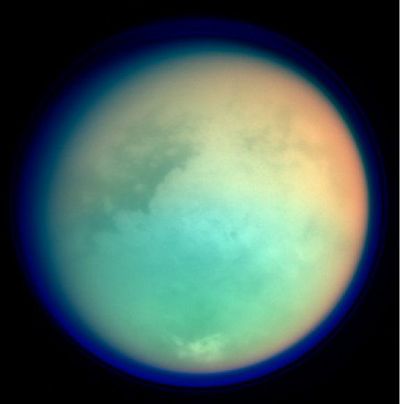Titan in the haze

Titan, fot. public domain
The largest satellite of Saturn, Titan is one of the few moons in our solar system with a thick and hazy orange atmosphere whose formation and chemical composition are far from well understood. No wonder this tempting target for space missions was one of huge scientific value for EU-funded researchers.
Voyager 1, when it arrived at Titan more than 30 years ago, could not see through the haze. But after numerous Cassini flybys and numerical simulations on Earth, scientists working on the 'Deposition of energy and photochemistry for the generation of Titan's haze' (DEPTH) project have learned much about this distant moon's atmosphere.
Measurements collected by the different instruments onboard Cassini revealed, as it was suspected, that basic ingredients for life are available on Titan. Like Earth's atmosphere, Titan's haze is largely composed of molecular nitrogen, but it is also loaded with aerosols of which organic compounds are a significant component.
Titan's surface lacks the energy needed to break apart atmospheric nitrogen, methane and carbon monoxide, rearranging them in more complex molecules. The upper reaches of the atmosphere, on the other hand, are exposed to ultraviolet radiation and electrically charged particles flowing outward from the Sun.
DEPTH researchers mixed gases found in Titan's atmosphere in the lab and created a synthesised analogue of the haze, simulating the radiation and particle energy deposed in the upper atmosphere. Within this so-called tholin, different molecules were formulated and then analysed by a mass spectrometer.
Eighteen molecules resembling amino acids and nucleotide bases provided evidence that Titan's haze may be a reservoir of prebiotic molecules. Besides the chemistry that produces biological material, the formation of ammonia and hydrogen isocyanide was reproduced.
A new stochastic description of chemical reactions enabled the simulation of partial experimental data from Cassini. Additionally, simulations of the action of different energy sources and the gradients of densities in the predominant nitrogen–methane atmosphere provided valuable insights into the photochemistry in Titan's atmosphere.
New knowledge produced by the DEPTH project of the pathways for the formation of complex molecules on Titan is expected to help scientists better understand the Earth and its atmosphere. It will also help improve predictions for distant bodies that haven't yet been explored, such as Pluto and Neptune's moon Triton.
published: 2015-04-10